
Intel Celeron N4500 Benchmark, Test and specs
Last updated:
The Intel Celeron N4500 is a 2 core processor. It can handle 2 threads simultaneously and was introduced in Q1/2021. The Intel Celeron N4500 is based on the 10. generation of the Intel Celeron series and requires a mainboard with the socket BGA 1338. The Intel Celeron N4500 scores 593 points with one CPU core in the Geekbench 5 benchmark. When using all CPU cores, the result is 1,078 points.

| Name: | Intel Celeron N4500 |
|---|---|
| Family: | Intel Celeron (165) |
| CPU group: | Intel Celeron N4000/N5000 (6) |
| Architecture: | Jasper Lake |
| Segment: | Mobile |
| Generation: | 10 |
| Predecessor: | -- |
| Successor: | -- |
CPU Cores and Base Frequency
The 2 CPU cores of the Intel Celeron N4500 clock with 1.10 GHz (2.80 GHz). The number of CPU cores and the clock frequency of the processor are largely responsible for the overall performance.
| CPU Cores / Threads: | 2 / 2 |
|---|---|
| Core architecture: | normal |
| Cores: | 2x Tremont |
| Hyperthreading / SMT: | No |
|---|---|
| Overclocking: | No |
| Frequency: | 1.10 GHz |
| Turbo Frequency (1 Core): | 2.80 GHz |
| Turbo Frequency (2 Cores): | 2.40 GHz |
Internal Graphics
With the Intel UHD Graphics 16 EUs (Jasper Lake), the Intel Celeron N4500 has an build in graphic solution. It has 16 SM processors, which have a total of 128 texture shaders. The iGPU not only enables games, but also significantly accelerates video playback.
| GPU name: | Intel UHD Graphics 16 EUs (Jasper Lake) |
|---|---|
| GPU frequency: | 0.35 GHz |
| GPU (Turbo): | 0.75 GHz |
| Compute units: | 16 |
| Shader: | 128 |
| Hardware Raytracing: | No |
| Release date: | Q1/2021 |
| Max. displays: | 3 |
|---|---|
| Generation: | 11 |
| Direct X: | 12 |
| Technology: | 10 nm |
| Max. GPU Memory: | 8 GB |
| Frame Generation: | No |
Hardware codec support
Processors that have an integrated graphics can play videos faster and more efficiently. This can have a positive effect on the battery life of notebooks, for example.
| h265 / HEVC (8 bit): | Decode / Encode |
|---|---|
| h265 / HEVC (10 bit): | Decode / Encode |
| h264: | Decode / Encode |
| VP8: | Decode / Encode |
| VP9: | Decode / Encode |
| AV1: | No |
|---|---|
| AVC: | Decode / Encode |
| VC-1: | Decode |
| JPEG: | Decode / Encode |
Memory & PCIeThe Intel Celeron N4500 supports up to 16 GB memory in up to 2 (Dual Channel) memory channels. This results in a maximum memory bandwidth of 46.9 GB/s. |
|
| Memory type: | Memory bandwidth: |
|---|---|
| DDR4-2933 DDR4-2933 | 46.9 GB/s 46.9 GB/s |
| Max. Memory: | 16 GB |
| Memory channels: | 2 (Dual Channel) |
| ECC: | No |
| PCIe: | 3.0 x 8 |
| PCIe Bandwidth: | 7.9 GB/s |
Thermal ManagementWith the TDP, the processor manufacturer specifies the cooling solution required for the processor. The Intel Celeron N4500 has a TDP of 6 W. |
|
|---|---|
| TDP (PL1 / PBP): | 6 W |
| TDP (PL2): | 20 W |
| TDP up: | -- |
| TDP down: | 4.8 W |
| Tjunction max.: | 105 °C |
Technical details
The Intel Celeron N4500 has a 5.50 MB large cache. The processor is manufactured in 10 nm. Modern production increases the efficiency of the processor.
| Technology: | 10 nm |
|---|---|
| Chip design: | Monolithic |
| Socket: | BGA 1338 |
| L2-Cache: | 1.50 MB |
| L3-Cache: | 4.00 MB |
| AES-NI: | Yes |
| Operating systems: | Windows 10, Windows 11, Linux |
| Virtualization: | VT-x, VT-x EPT, VT-d |
|---|---|
| Instruction set (ISA): | x86-64 (64 bit) |
| ISA extensions: | SSE4.1, SSE4.2 |
| Release date: | Q1/2021 |
| Release price: | -- |
| Part Number: | -- |
| Documents: | Technical data sheet |
Rate this processor
Benchmark results

The benchmark results for the Intel Celeron N4500 have been carefully checked by us. We only publish benchmark results that have been created by us or that have been submitted by a visitor and then checked by a team member. All results are based on and fullfill our benchmark guidelines.
Cinebench R23 (Single-Core)
Cinebench R23 is the successor of Cinebench R20 and is also based on the Cinema 4 Suite. Cinema 4 is a worldwide used software to create 3D forms. The single-core test only uses one CPU core, the amount of cores or hyperthreading ability doesn't count.
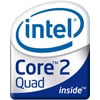
|
Intel Core 2 Quad Q9700
4C 4T @ 3.20 GHz |
||
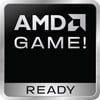
|
AMD Phenom II X4 955
4C 4T @ 3.20 GHz |
||

|
Intel Core i5-3317U
2C 4T @ 2.60 GHz |
||
|
|
Intel Celeron N4500
2C 2T @ 2.80 GHz |
||

|
Intel Celeron N5100
4C 4T @ 2.80 GHz |
||

|
Intel Core 2 Quad Q9650
4C 4T @ 3.00 GHz |
||

|
Intel Core m3-7Y30
2C 4T @ 2.60 GHz |
||
Cinebench R23 (Multi-Core)
Cinebench R23 is the successor of Cinebench R20 and is also based on the Cinema 4 Suite. Cinema 4 is a worldwide used software to create 3D forms. The multi-core test involves all CPU cores and taks a big advantage of hyperthreading.

|
Intel Celeron N4505
2C 2T @ 2.90 GHz |
||
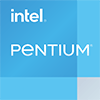
|
Intel Pentium G2020
2C 2T @ 2.90 GHz |
||

|
Intel Core i7-4650U
2C 4T @ 2.90 GHz |
||
|
|
Intel Celeron N4500
2C 2T @ 2.40 GHz |
||

|
Intel Pentium Gold 4417U
2C 4T @ 2.30 GHz |
||

|
Intel Core m3-7Y30
2C 4T @ 2.00 GHz |
||

|
Intel Pentium 2117U
2C 2T @ 1.80 GHz |
||
Geekbench 5, 64bit (Single-Core)
Geekbench 5 is a cross plattform benchmark that heavily uses the systems memory. A fast memory will push the result a lot. The single-core test only uses one CPU core, the amount of cores or hyperthreading ability doesn't count.

|
Intel Core i5-660
2C 4T @ 3.60 GHz |
||

|
Intel Core i5-661
2C 4T @ 3.60 GHz |
||

|
Intel Core i5-2520M
2C 4T @ 3.20 GHz |
||
|
|
Intel Celeron N4500
2C 2T @ 2.80 GHz |
||
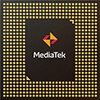
|
MediaTek Dimensity 800U
8C 8T @ 2.40 GHz |
||
|
|
HiSilicon Kirin 810
8C 8T @ 2.20 GHz |
||

|
Intel Core i5-2515E
2C 4T @ 3.10 GHz |
||
Geekbench 5, 64bit (Multi-Core)
Geekbench 5 is a cross plattform benchmark that heavily uses the systems memory. A fast memory will push the result a lot. The multi-core test involves all CPU cores and taks a big advantage of hyperthreading.
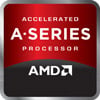
|
AMD A10-5750M
4C 4T @ 3.50 GHz |
||

|
Intel Core M-5Y70
2C 4T @ 2.00 GHz |
||

|
Intel Pentium G2020
2C 2T @ 2.90 GHz |
||
|
|
Intel Celeron N4500
2C 2T @ 2.40 GHz |
||

|
Intel Celeron 4305U
2C 2T @ 2.20 GHz |
||
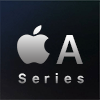
|
Apple A8X
3C 3T @ 1.50 GHz |
||

|
Intel Core i7-2617M
2C 4T @ 1.50 GHz |
||
Geekbench 6 (Single-Core)
Geekbench 6 is a benchmark for modern computers, notebooks and smartphones. What is new is an optimized utilization of newer CPU architectures, e.g. based on the big.LITTLE concept and combining CPU cores of different sizes. The single-core benchmark only evaluates the performance of the fastest CPU core, the number of CPU cores in a processor is irrelevant here.

|
Intel Pentium N6415
4C 4T @ 3.00 GHz |
||

|
Intel Core i7-870S
4C 8T @ 3.60 GHz |
||

|
Intel Core i7-875K
4C 8T @ 3.60 GHz |
||
|
|
Intel Celeron N4500
2C 2T @ 2.80 GHz |
||
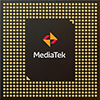
|
MediaTek Helio P90
8C 8T @ 2.20 GHz |
||

|
Intel Core i3-540
2C 4T @ 3.06 GHz |
||

|
Intel Pentium G2010
2C 2T @ 2.80 GHz |
||
Geekbench 6 (Multi-Core)
Geekbench 6 is a benchmark for modern computers, notebooks and smartphones. What is new is an optimized utilization of newer CPU architectures, e.g. based on the big.LITTLE concept and combining CPU cores of different sizes. The multi-core benchmark evaluates the performance of all of the processor's CPU cores. Virtual thread improvements such as AMD SMT or Intel's Hyper-Threading have a positive impact on the benchmark result.

|
MediaTek MT8176
6C 6T @ 2.00 GHz |
||

|
Intel Pentium 3825U
2C 4T @ 1.90 GHz |
||

|
Intel Celeron 3955U
2C 2T @ 2.00 GHz |
||
|
|
Intel Celeron N4500
2C 2T @ 2.40 GHz |
||

|
Intel Celeron N3450
4C 4T @ 2.20 GHz |
||

|
MediaTek Helio P22
8C 8T @ 2.00 GHz |
||

|
Qualcomm Snapdragon 450
8C 8T @ 1.80 GHz |
||
Cinebench R20 (Single-Core)
Cinebench R20 is the successor of Cinebench R15 and is also based on the Cinema 4 Suite. Cinema 4 is a worldwide used software to create 3D forms. The single-core test only uses one CPU core, the amount of cores or hyperthreading ability doesn't count.

|
Intel Celeron N5100
4C 4T @ 2.80 GHz |
||

|
Intel Pentium Gold 4417U
2C 4T @ 2.30 GHz |
||

|
Qualcomm Snapdragon Microsoft SQ3
8C 8T @ 3.00 GHz |
||
|
|
Intel Celeron N4500
2C 2T @ 2.80 GHz |
||

|
Intel Pentium Silver J5040
4C 4T @ 3.20 GHz |
||

|
Intel Pentium Silver J5005
4C 4T @ 2.80 GHz |
||

|
AMD A9-9425
2C 2T @ 3.70 GHz |
||
Cinebench R20 (Multi-Core)
Cinebench R20 is the successor of Cinebench R15 and is also based on the Cinema 4 Suite. Cinema 4 is a worldwide used software to create 3D forms. The multi-core test involves all CPU cores and taks a big advantage of hyperthreading.

|
AMD A6-3500
3C 3T @ 2.40 GHz |
||

|
Intel Celeron N3450
4C 4T @ 2.20 GHz |
||

|
AMD A8-6410
4C 4T @ 2.40 GHz |
||
|
|
Intel Celeron N4500
2C 2T @ 2.40 GHz |
||

|
AMD A10-7350B
4C 4T @ 2.70 GHz |
||
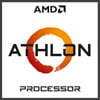
|
AMD Athlon 5350
4C 4T @ 2.05 GHz |
||

|
Intel Celeron J1900
4C 4T @ 2.42 GHz |
||
iGPU - FP32 Performance (Single-precision GFLOPS)
The theoretical computing performance of the internal graphics unit of the processor with simple accuracy (32 bit) in GFLOPS. GFLOPS indicates how many billion floating point operations the iGPU can perform per second.

|
Intel Atom x6413E
Intel UHD Graphics 10th Gen (16 EU) @ 0.75 GHz |
||

|
AMD A4-6300
AMD Radeon HD 8370D @ 0.76 GHz |
||

|
AMD A4-6320
AMD Radeon HD 8370D @ 0.76 GHz |
||
|
|
Intel Celeron N4500
Intel UHD Graphics 16 EUs (Jasper Lake) @ 0.75 GHz |
||

|
Intel Celeron N5095A
Intel UHD Graphics 16 EUs (Jasper Lake) @ 0.75 GHz |
||

|
Intel Celeron N5095
Intel UHD Graphics 16 EUs (Jasper Lake) @ 0.75 GHz |
||

|
Intel Pentium N6211
Intel UHD Graphics 16 EUs (Elkhart Lake) @ 0.75 GHz |
||
Estimated results for PassMark CPU Mark
Some of the CPUs listed below have been benchmarked by CPU-monkey. However the majority of CPUs have not been tested and the results have been estimated by a CPU-monkey’s secret proprietary formula. As such they do not accurately reflect the actual Passmark CPU mark values and are not endorsed by PassMark Software Pty Ltd.

|
AMD A4-5000
4C 4T @ 1.50 GHz |
||

|
AMD A6-5400B
2C 2T @ 3.80 GHz |
||

|
Intel Core M-5Y10a
2C 4T @ 1.60 GHz |
||
|
|
Intel Celeron N4500
2C 2T @ 2.40 GHz |
||

|
Intel Celeron G1850
2C 2T @ 2.90 GHz |
||

|
Intel Core i3-3130M
2C 4T @ 2.60 GHz |
||

|
Intel Core i5-2515E
2C 4T @ 2.50 GHz |
||
Benchmarks

Cinebench R23 (SC)
586 entries
586 entries
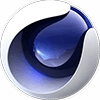
Cinebench R23 (MC)
565 entries
565 entries

Geekbench 5 (SC)
2,488 entries
2,488 entries

Geekbench 5 (MC)
2,461 entries
2,461 entries
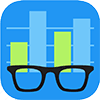
Geekbench 6 (SC)
1,754 entries
1,754 entries

Geekbench 6 (MC)
1,702 entries
1,702 entries
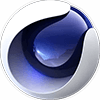
Cinebench R20 (SC)
656 entries
656 entries
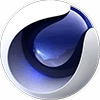
Cinebench R20 (MC)
604 entries
604 entries

FP32 SP (iGPU)
2,026 entries
2,026 entries

3DMark Timespy (iGPU)
512 entries
512 entries

PassMark CPU-Mark
2,391 entries
2,391 entries
Description of the processor
The Intel Celeron N4500 is a processor with 2 cores (dual-core processor). It comes from the mobile segment of Intels CPU program and is based on the Jasper Lake architecture. The two processor cores have a base clock of 1.10 gigahertz and the maximum turbo clock of the cores is 2.80 gigahertz (utilization of 1 processor core) or 2.40 gigahertz (utilization of 2 processor cores).The Intel UHD Graphics 16 EUs (Jasper Lake) internal graphics unit, which has 16 execution units with 128 shader units, is integrated into the Intel Celeron N4500. With this iGPU you can supply up to 3 monitors with an image. The Intel UHD Graphics 16 EUs (Jasper Lake) is manufactured with a structure width of 10 nanometers and was launched in the first quarter of 2021. The base clock frequency of the graphics unit is 350 megahertz and the maximum dynamic clock (turbo clock) is 750 megahertz.
The Intel Celeron N4500 can be operated with RAM of the type DDR4-2933 or LPDDR4-2933 and a maximum of 16 gigabytes of memory can be operated together with the processor. The Intel Celeron N4500 has 2 memory channels, with which the processor achieves a memory bandwidth of 46.9 gigabytes per second.
The mobile Intel Celeron N4500 can be configured by end product manufacturers with a TDP (Thermal Design Power) of between 6 and 20 watts. The Intel Celeron N4500 can be operated at a maximum temperature of up to 105 degrees Celsius before the processor automatically clocks down.
The processor itself is based on a monolithic chip design and, like the internal graphics unit, is also manufactured with a structure width of 10 nanometers. The level 2 cache is 1.50 megabytes and the level 3 cache is 4.00 megabytes and it supports the virtualization technologies VT-x, VT-x EPT, VT-d.
Popular comparisons
back to index







